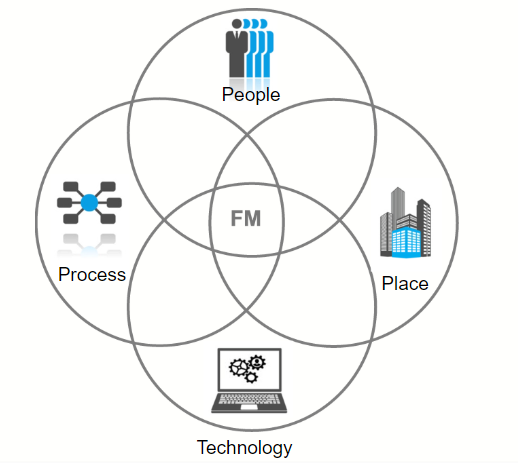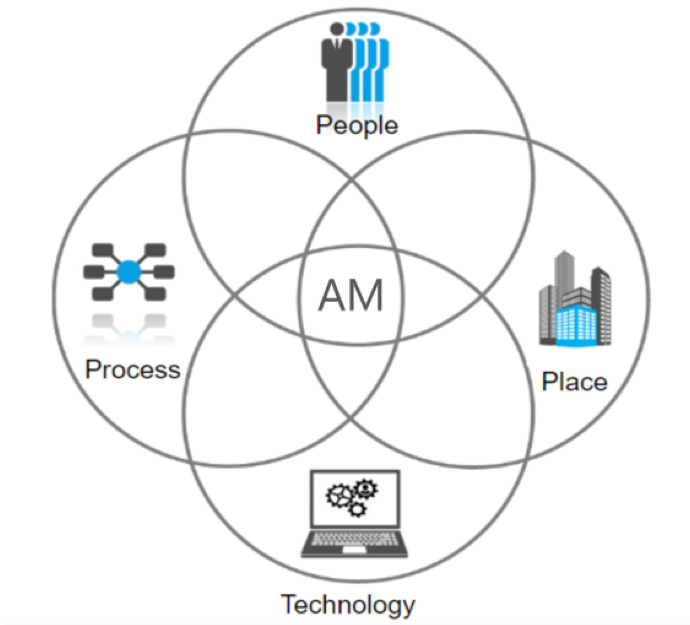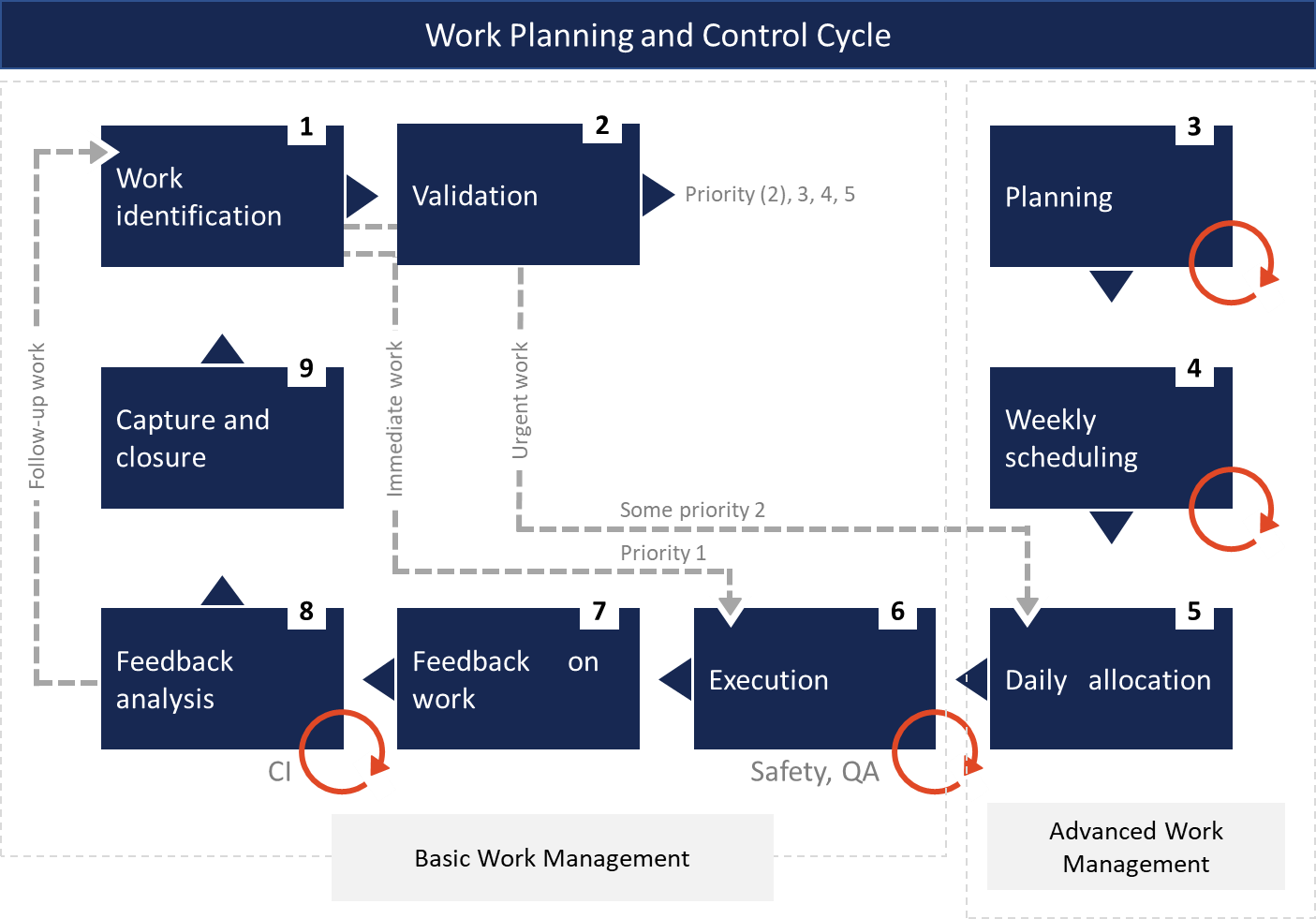Julia Phala, Head of Sales and Client Relation Management
Are you a manufacturing business struggling to contain the cost of production and upkeep of your physical assets such as buildings and equipment?
In challenging economic circumstances, such organisations are usually under pressure to save costs to meet bottom-lines.
Traditionally asset management and facilities management are managed separately, but a case can be made for combining these two functions. In this article, we delve deeper into the concept of an integrated facilities and asset management function to explore how you can affect savings to meet your bottom line by streamlining your business processes and improving operational efficiencies.
To ensure the availability of the facilities and assets required for production, medium to large organisations often depend on the facilities management and physical asset management divisions respectively. Often these services operate in parallel despite sharing similarities in scope and skills requirements.
In manufacturing, the asset management team are also referred to as plant maintenance. Irrespective of whether you process raw materials or produce fast-moving consumer goods, the success of your operation depends on people, processes and technology over and above the facility and its assets. To successfully execute the facilities and asset management functions, you need competent people to plan and execute work, guided by best practice processes and a system to coordinate the activities and manage information.


Figure 1: Interdependencies of facilities and assets management functions
Figure two shows the Work Planning and Control business process, the main steps involved are identifying, planning and executing work. The same process is followed by the facilities and asset management teams. For any maintenance tasks to be carried out in either of the functions, step 1 will be initiated – this is when an internal customer requests work to be done. For instance, a typical facilities management request could be for a faulty air-conditioner that has to be fixed, while a typical asset management request could be for a faulty production machine. The requests are routed to the facility manager or plant (maintenance) manager respectively, to include in their planning (step three) or, depending on urgency, for immediate execution (step six). Steps seven, eight and nine are then carried out to complete the workflow. In both requests, the maintenance business process followed is the same and ultimately serves the same end goal. Enabling productivity to achieve company objectives.

Figure 2: Work planning and control business process
Table one, below, provides a summary of the mutual measures and terminologies identified in a study by Julia Phala, Pragma’s Head of Sales and CRM, concluded in 2019.
| Terminology | Context |
| Efficiency | Commonly used in physical asset management referring to doing the right maintenance, on the right equipment and at the right time. |
| Productivity | Commonly used in facilities management referring to the rate at which output is achieved by ensuring the availability of facilities or required support functions. |
| Effectiveness | Refers to how well the effort results into reliability and availability e.g. extent to which planned activities are realized and planned results achieved. |
| Consistency | Refers to achieving the same quality of output by focusing on processes. |
| Compliance | To assure legal, statutory and regulatory requirements. |
| Customer/stakeholder satisfaction | Meeting customer or stakeholder demands without compromising the quality of service or safety are key to both functions. |
| Return on investment | Maximining value on capital investment through improved asset performance and output. |
| Enterprise Asset Management System (EAMS) also known as Computerised Maintenance Management System (CMMS) | A computerised system used to manage production equipment throughout their life cycle. |
| Computer-Aided Facilities Management System (CAFMS) also known as Computerised Maintenance Management System (CMMS) | A computerised system used to manage facilities throughout their life cycle. |
Table 1: Common terminologies used in Facilities Management and Physical Asset Management
The study revealed the inefficiencies of having the facilities and asset management (FM and AM) divisions operate in parallel and historical perceptions that influenced these functions negatively. Instead of appreciating these functions as strategic, value-adding teams, they are often seen as ‘costs to be contained’ or ‘the necessary evil’. This approach has led to an increased cost of operations due to misaligned objectives. Some of the observable inefficiencies in operating FM and AM separately are excessive overheads in staff salaries, costly supplies, use of multiple software or contractors for work with similar scope, and inefficient processes due to a lack of alignment between the divisions. Below are two examples.
Example 1: Disjoined business processes
For the first example, we look at a manufacturing company, with 1000 staff members. As described above, this manufacturing concern’s FM and AM functions operate in parallel as two separate teams. Table two below demonstrates the scope of the functions.
| Facilities management maintenance scope | Asset management maintenance scope |
| Site maintenance i.e. landscaping, road, fence, parking lot | Maintenance of production equipment within safety yellow lines and related tools, requiring mechanical and electrical technicians and artisans. |
| Structural maintenance i.e. overhead doors, cranes, roofing system, elevators etc | |
| Architectural maintenance i.e. painting, refurbishment etc | |
| Mechanical maintenance i.e. HVAC, plumbing, fire protection etc | |
| Electrical maintenance i.e. low, medium and high voltage, fire alarm, lighting, UPS) |
Table 2: Scope for Facilities Management and Asset Management
In this example, the elevator, that gives access to the production plant and overhead crane falls under the facilities manager’s portfolio. On the other hand, everything within the plant’s safety yellow line falls under the plant manager’s portfolio. Both parties have a common goal; ensuring asset and facilities uptime in support of production. Although these teams share a common goal, their business processes are disjointed and do not inform each other.
The plant manager follows a preventive maintenance plan and schedules maintenance work, estimated at three hours, on a particular production line. Unknowingly, the facilities manager, who also follows a preventative plan, schedules maintenance work on the elevator and overheard crane making both unavailable to the plant maintenance team.
As a result of the disjointed business processes, the maintenance scheduled on the production line now takes from three days to three weeks to complete with dire consequences on production. Let us use a hypothetical example to illustrate the point. Translating this to Rands, and assuming the cost of downtime to be R 404 360 per minute (an industry average for automotive) the loss would equate to R 24 261 600,00 per hour, or R 582 278 400,00 per 24-hour shift. This does not account for unproductive staff labour during the period.
Example 2: Making the most of skilled recourses
As can be seen in table two, FM and AM both need mechanical and electrical engineering skills to fulfil their scopes. Let us take a look at the cost savings that could be realised when these resources are shared amongst the FM and AM teams as opposed to each team appointing its own resources.
We’re assuming that the facilities management division has two mechanical technicians, two electrical technicians and ten tradespeople collectively; and the asset management has two mechanical technicians, two electrical technicians and ten tradespeople. At average rates of R 150 per hour for technicians and R 80 per hour for artisans, the salary bill would cost R 5 376 000.00 per annum combined. If the functions are integrated at strategic and tactical levels, where planning for all maintenance are handled by one technician in the respective disciplines (ie all functions for both facilities and assets are planned by one mechanical technician or planner and one electrical technician or planner), the salary bill is already cut by R 1 152 000.00 per annum.
Other cost savings could come from combining the functions of the operational team. For example, instead of 20 tradespeople, employ ten to serve both disciplines. In this instance, five tradespeople each are allocated to the mechanical and electrical work respectively resulting in a further saving of R 1 536 000.00 per annum. When following this strategy, staff retention and change management are critical and requires a mental shift by both divisions.
The study also revealed that business leaders have an appetite for the integration of FM and AM. Businesses, especially in manufacturing, have plenty to gain from the integration of FM and AM. Some immediate bottom-line value adds, can be gained mainly by:
- Streamlining of processes, such as Asset Register Administration, Work Planning and Control, Spares Management, and Contract Management.
- Software optimisation (EAMS/CMMS) through the use of a single system, as opposed to multiple software systems.
- Upskilling and sharing of human resources, where the appointment of maintenance resources is per engineering discipline and equipment class (criticality A, B, C) across FM and AM function.
- Sharing skilled resources, instead of each division appointing its own contractors, contractors can be shared.

Figure 3: Responses obtained at SAAMA 2019 conference
As illustrated in the examples above, a siloed approach to Asset and Facilities management is a costly exercise. For the proposed improvement to work, a central coordination function at a strategic level is required. Figure four visually represents the concept of a leaner, combined FM and AM Division.
A streamlined business process can result in significant cost-savings and, when automated, can eliminate waste. After all, facilities management and asset management functions are concerned with maximising return on investment by ensuring productivity, compliance and stakeholder satisfaction.

Figure 4: Proposed Facilities and Assets Management Structure
Sources:
- “Integrating physical asset management and facilities management operation and its benefits to the manufacturing industries”, Phala J (2019)
- “Work Planning and Control”, Pragma (2019)
- “Understanding the Financial Cost of Downtime in Manufacturing”, Daisyme P (2018)
